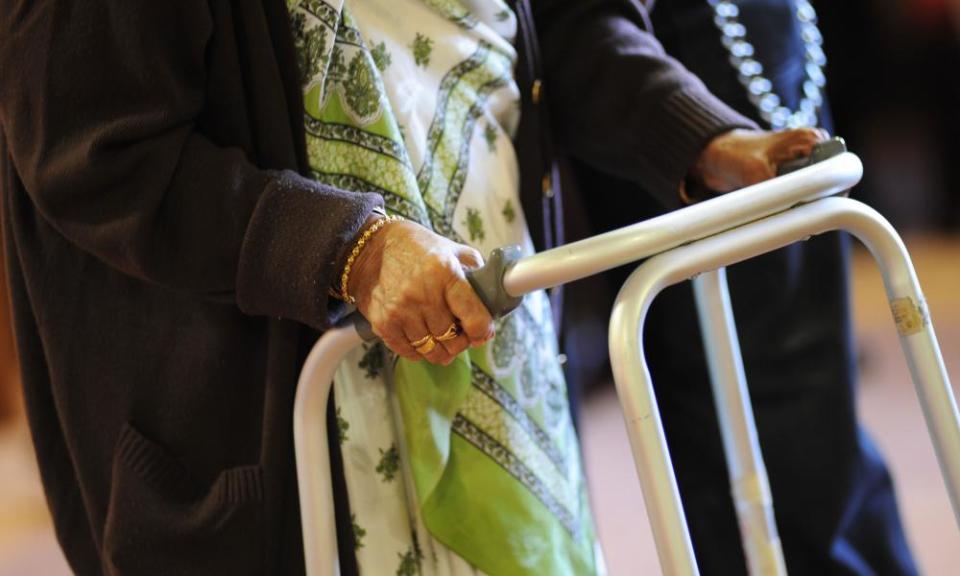Doctors say $21bn could be saved by eliminating avoidable hospital admissions for older Australians

More than $21bn could be saved on avoidable hospital admissions involving older Australians over the next four years if doctors were better integrated into Australia’s aged care system and the Medicare rebate for longer visits was increased, according to an analysis from the Australian Medical Association.
The AMA has said the current Medicare rebate does not reflect the time it takes general practitioners to travel to aged care facilities or conduct home visits for Australians aged over 65. As a result, the peak body for doctors argued that older Australians were not accessing the healthcare they needed and were ending up in hospital.
In a report released on Tuesday, titled Putting health care back into aged care, the AMA estimates that from July 2020 to June this year there will have been 27,569 admissions of nursing home residents to hospitals, at a cost of $312m, that were potentially avoidable.
In the four years to 2024-25, potentially avoidable hospital visits from nursing home residents are estimated by the AMA to increase to $1.43bn.
For older Australians living independently or with family in the community – many of whom are on the waitlist for home care packages – the AMA believes $3.73bn could be saved each year if their interactions with GPs and registered nurses were increased.
That estimated savings balloons to $18.2bn over the next four years if health issues were detected earlier by doctors.
The report also calculates that over the next four years the costs that could be eliminated include $497m on transfers to emergency departments that do not result in admissions, $138m on return trips to emergency departments within 30 days, and $887m on people waiting in hospital for a place in a nursing home.
Such savings, according to the report, would be achieved only if GP Medicare rebates were increased and the registered-nurse and minutes-of-care ratio requirements recommended by the aged care royal commission were adopted.
Related: Labor open to aged care levy as part of bipartisan funding agreement
Ahead of the Morrison government revealing its response to the royal commission in the 11 May budget, the AMA is calling for a 50% increase in the Medicare rebate for a visit to an aged care home “to compensate for the additional time and complexity involved in comparison to a GP consultation in their own rooms”.
The AMA estimates this would cost $145m a year and prevent avoidable hospital admissions among residents. The cost would increase if extended to home visits for all older Australians across the community.
The AMA says takes an average of 89 minutes for a GP to travel to and from a nursing home and conduct a consultation, but that just 14 minutes on average is spent on tasks covered by the Medicare rebate.
That results in higher consultation costs and older Australians being more hesitant to seek GP appointments.
“This reasonably small investment is easily justifiable by the billions of dollars of potential savings outlined above, and should have immediate and measurable impacts,” the report says, noting the figures do not take into account the emotional toll and health implications of a hospital visit.
Related: Australia's aged care system needs massive investment, damning royal commission report finds
The AMA president, Dr Omar Khorshid, said: “We believe these hospital admissions, presentations and stays could be prevented through better provision of primary care in aged care settings and that means investing in GPs and registered nurses.
“Proper medical care based on the needs of our older people is a basic human right and our broken system is failing them.”
Khorshid urged the government to adopt recommendations from the sector “to future-proof aged care so we have a system we, ourselves, would be happy to live in and send our parents and other loved ones to”.
“We understand properly funding aged care will require significant investment, but this is an opportunity to also significantly improve the quality of life for older Australians while also realising substantial savings in other parts of the health system.”
The AMA’s call comes after aged care providers and advocacy groups on Monday urged the Morrison government to embrace large-scale reforms.
Related: Relying on casuals in aged care will weaken royal commission's reforms, experts warn
No specific costings were issued by aged care royal commissioner Tony Pagone and Lynelle Briggs, in part because they were not unanimous in their 148 recommendations, particularly regarding governance and how to best raise the billions of extra dollars needed to implement the reforms.
Economists have estimated Australia’s aged care system will require at least $36bn a year if the Morrison government adopts the royal commission’s cheapest recommendations to address neglect and abuse and realise a right of care for older Australians – $9bn more than the current annual spend of $27bn.
That could soar to $42.5bn a year if the most ambitious reforms are adopted to fund tens of thousands of extra home care packages and increase staff qualifications, ratios and pay across home and residential aged care.

 Yahoo News
Yahoo News 